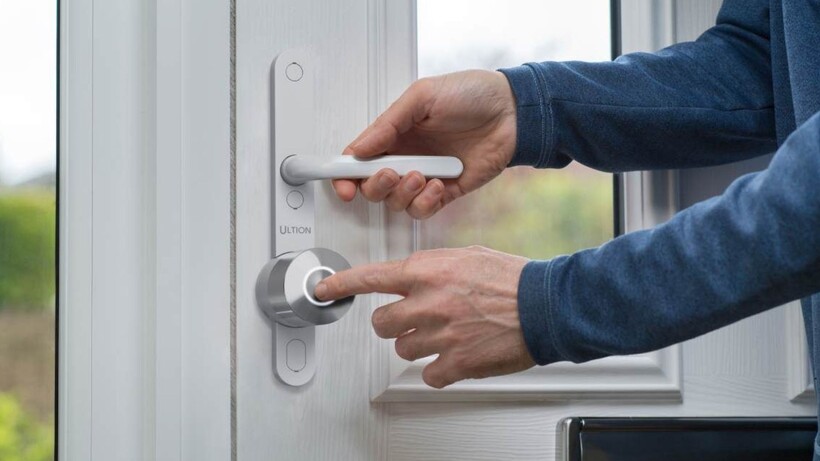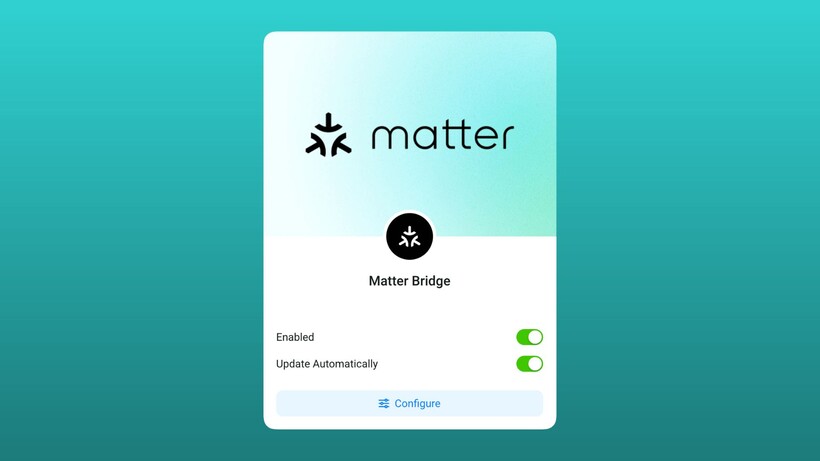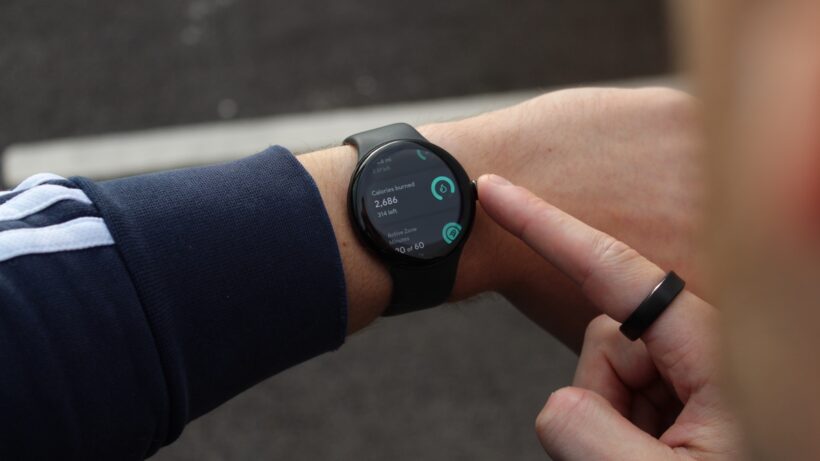
For years, the Coros Pace line has been our go-to recommendation for runners who want some essential premium features without paying Garmin’s asking prices.
It’s the main reason we rated the Coros Pace 3 so highly when we reviewed it in 2023—and this latest edition brings the series in line with the current running watch trends.
It takes the lightweight, long-lasting design of that predecessor and adds the one feature it was crying out for: an AMOLED display. It’s a move that puts it squarely in contention with rivals, while crucially retaining its signature low price.
Not everything is perfect with the Pace 4—heart rate, for example, still isn’t top of the class for all activities. Yet, it remains a top option for those seeking a budget running watch. Here’s our full review.
Price and competition
The Coros Pace 4 costs $249/£229—which is up slightly from the Pace 3’s $229/£219 tag. Considering all that has happened since its 2023 release, we think that’s pretty good going.
At this price, the Pace 4 is a relatively entry-level choice in a field of very capable sports watches that can often start at double this price. But it’s not short of competition.
The Garmin Forerunner 165 is the obvious big-name alternative, at $249/£249 (or more for its music-capable version). It’s slightly weaker in terms of feature depth and battery life, but we’ve found the heart rate performance a little more consistent—and the software is just that little more attractive.
From Suunto, your best option is the Suunto Run, at $249/£199. It comes with a comfy fabric strap as standard and has a more colourful design. Yet, its software isn’t as refined, and we’ve had slightly more issues with its heart rate readings during tracked exercise.
Elsewhere, the Polar Pacer is another that’s close in cost, but it’s a memory-in-pixel screen watch, not an AMOLED one. For that punchier-looking display, you need to jump up to the Polar Ignite 3, which is getting on a bit (released in 2022) and costs more at its MSRP (though it can often be found for less online).
Design and display

The Pace 4 is a very light 43mm watch. Part of the goal here is to represent the antithesis of the wrist abominations that once served as the standard blueprint for sports watches.
It weighs 40g with the silicone band I’m using, and is 13.6mm including HR array bump (11.9mm without). These specs are nearly identical to those of the Forerunner 165 and, indeed, the old Pace 3.
Retaining the light build
For the very best comfort, you might want to pick up Coros’s fabric strap, but, ultimately, the Pace 4 is about as comfortable as a sports watch gets. Low weight comes largely from Coros’s use of plastic. The entire shell, bar the screen glass and glass HR array covering, is plastic. Buttons? Plastic. Its rear is plastic, too.
This is not a lavish watch, but the only part that feels a little cheap is the rotary dial. While super-smooth, there’s just not that much substance to it.
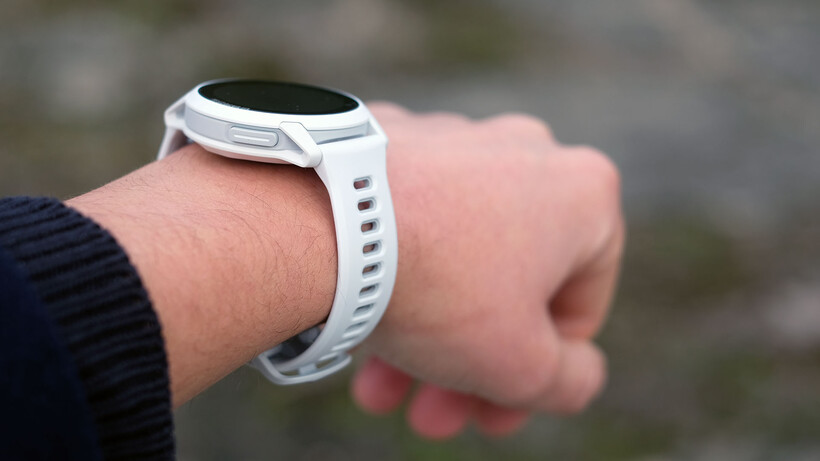
Many years of testing these wearables have left me with a real appreciation of these tough plastics. They tend to be more forgiving and highlight wear less readily than a technically harder, flashier, and more expensive treated metal.
The Pace 4’s screen glass could be better, though. It’s a 2.5D ‘mineral glass’ of an unspecified type or origin. I haven’t put a scratch in it yet, but it’s likely less hard and less scratch-resistant than Gorilla Glass, and certainly less so than a Sapphire Crystal.
5ATM water resistance is good enough for casual swimming, but this isn’t a watch to take diving either. Such ruggedisation is the norm at this level.
The display upgrade
Ultimately, it’s a plain, largely unshowy watch. But it does have a much brighter, more colourful screen than the Pace 3’s transflective display. It’s a 1.2-inch AMOLED panel of 390 x 390 pixel resolution. Again, these specs are identical to those of the Forerunner 165.
High-resolution OLED watch screens are incredibly common, though, and have been for years. The claimed peak brightness of 1500 nits isn’t that high by watch standards, but it is more than enough for solid clarity. You do need to switch up the brightness to get a “bright” looking watch, though. The default Standard mode is pretty conservative, because Coros likes its long battery life. High and Max modes pop significantly more.
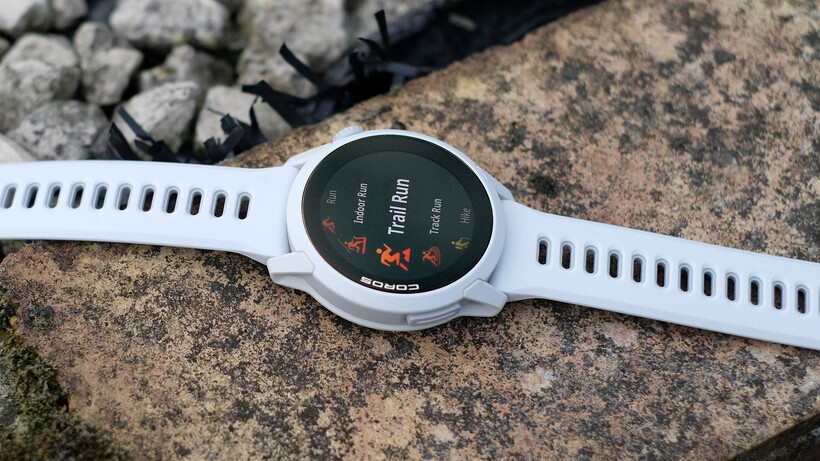
Even at Max, though, the Pace doesn’t instantly give off the impression of an ultra-bright watch, as the screen typically lights up at a lower level before ramping up a second or so later. Garmin’s latest Fenix and Forerunner models indulge in far higher brightness. But what we get here is perfectly solid.
Coros has also done a solid job with the Pace 4’s haptics, too. Rather than a basic vibration motor, it has a more refined system that generates small, click-like feedback as you use the crown to scroll through menus.
Heart rate and GPS accuracy
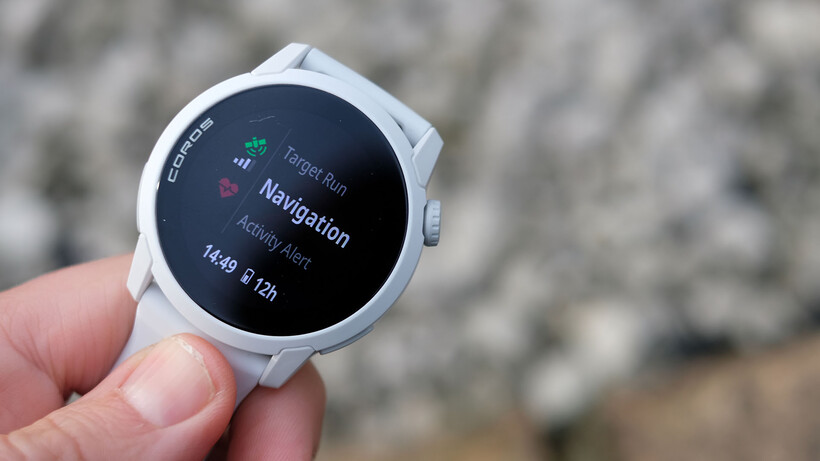
The basics of the Pace 4’s heart rate hardware look just like that of the higher-end Coros Nomad. It uses five LED blobs and four light sensors to see what’s going on under your skin.
Results here are solid, but not quite at the level of a Garmin Forerunner or Fenix, or an Apple Watch. An inexplicably dodgy first run aside (where the HR was consistently about 10-15bpm too high), the Pace 4 is absolutely up to the job of general run tracking.
During a final test run, I wore it and the Forerunner 970 simultaneously. The two were in lockstep throughout, with generally no more than a single bpm separating their readings over the course of an hour.
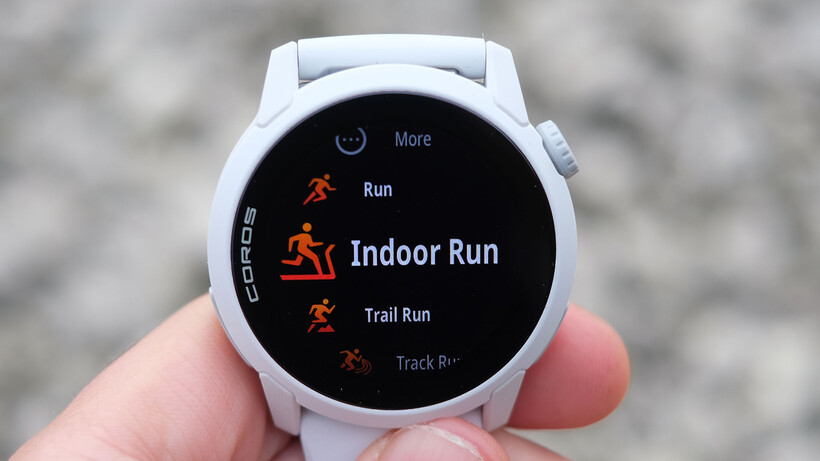
Other activities did highlight some potential room for improvement, though. During a tough spin class, the Pace 4 recorded my peak heart rate at 155bpm when it was actually somewhere in the high 170s. It also, like most wearables, doesn’t excel in the gym during weightlifting sessions. While acceptable, it misses several of those short, sharp exertion spikes.
I’d say the Pace 4 sits somewhere between the Suunto Run and Garmin Forerunner 165, in terms of HR accuracy. It’s good, but not perfect for all pursuits.
GPS tracking performance
There are no such issues with the Pace 4’s GPS. The maps it produces clearly show what side of the road you were on, and don’t randomly show you running through residential buildings or other unlikely stuff.

Triangulation usually only takes a few seconds, too. Coros hasn’t skimped on the GPS tech inside the Pace 4 either. It has dual-frequency GPS for greater accuracy in more challenging environments.
It’s even, unusually, turned on by default. Since it generally consumes more battery, you’ll often have to do this manually on other watches.
It’s an important win for the Pace 4 over the Garmin Forerunner 165, which doesn’t have dual-band GPS. You need to upgrade to the far more expensive Forerunner 265 or Forerunner 570 to get that.
Smart features and training insights
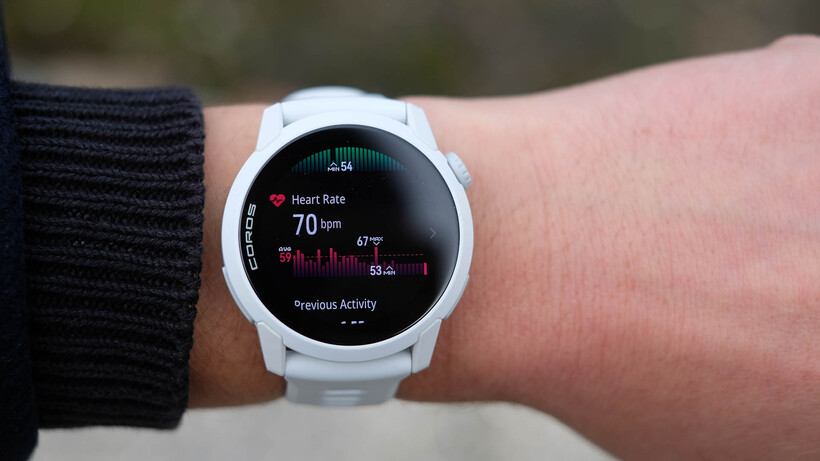
One of the Pace 4’s headline new features is a microphone. But, at launch at least, you could be forgiven for ignoring it.
The watch doesn’t use the mic to let you talk to a phone assistant. It’s not for calls either, as the Pace doesn’t have a speaker. Instead, for now, the key feature is in letting you leave “voice pins” while tracking an activity.
These are then attached to the maps of the activity recorded in the Coros app on your phone. How appealing this is may depend on how accustomed you are to communicating via voice notes.
You’ll also be able to log voice comments after sessions, like some sort of Star Trek cast member, although this doesn’t appear to be available in my Pace 4’s firmware yet.
This stuff doesn’t appeal to me personally, but I can see what Coros is going for here. And it makes sense.
The training insights
Elsewhere, the Pace 4 has a wealth of features that go far beyond the basics. Sometimes missing from lower-end watches, it has training load and recovery stats—useful for those who get anywhere near close to pushing the limit on weekly volume.
A Running Fitness score offers an alternative to VO2 max for progress tracking, with estimates for your 5K/10K/half marathon, and marathon attached.
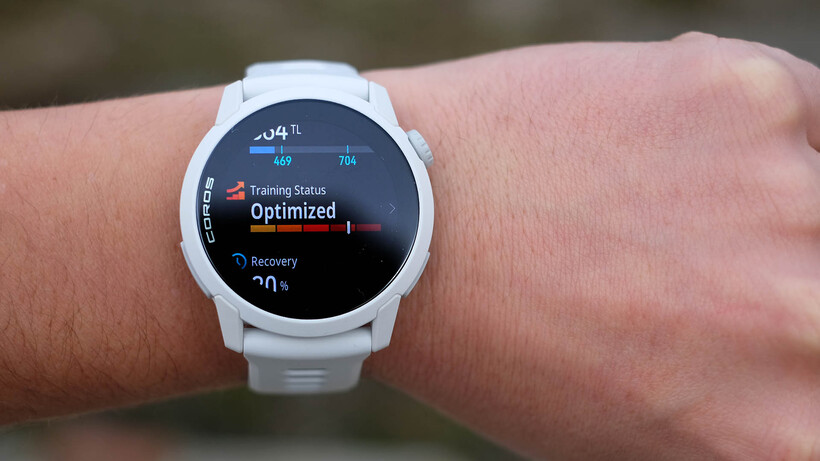
Runners even get ground contact time, stride length, running power, and stride height stats, although I don’t think Coros presents them in a way that makes them particularly actionable. Are they good or bad? Need to be improved? You need to be clued up already to work that out.
This is one area I think Garmin does slightly better, as well as having a somewhat better-looking, smoother-feeling watch interface.
The Pace 4 also has baked-in training features. Using the Coros app, you can transfer over guided, structured runs, rides, gym workouts, swims, and climbing sessions. Or, going even further, sign up for a long-term training plan (including marathon training). Some of these are also based on your current performance level, so they aren’t just for beginners or intermediates. And there are more rigid training plans for fairly advanced runners, as well.
Mapping, music, and storage
Back to the Pace 4’s core features, you can send GPX planned routes to the watch for onboard navigation, too. There are no on-watch maps, though; an upgrade to the Coros Pace Pro or another higher-end model is needed for that. Yet, you can navigate through a breadcrumb trail, which is the next best thing.

Music support is onboard, but, as in other Coros models, it’s pretty basic. There’s no integration of music streaming services. You plug the Pace 4 into a laptop or PC, and manually transfer files over. Not too many of us are maintaining digital MP3 libraries for this sort of stuff, but you won’t be able to fit a huge array of tracks anyway.
The Pace 4 has 4GB of storage, and only 1.71GB is available for you to use. With no speaker inside—and it would sound terrible anyway—music relies on a Bluetooth connection. I had no issues getting the Pace 4 to hook up to a pair of wireless headphones—ideal for those who stay entertained while running phone-free.
Health and sleep tracking
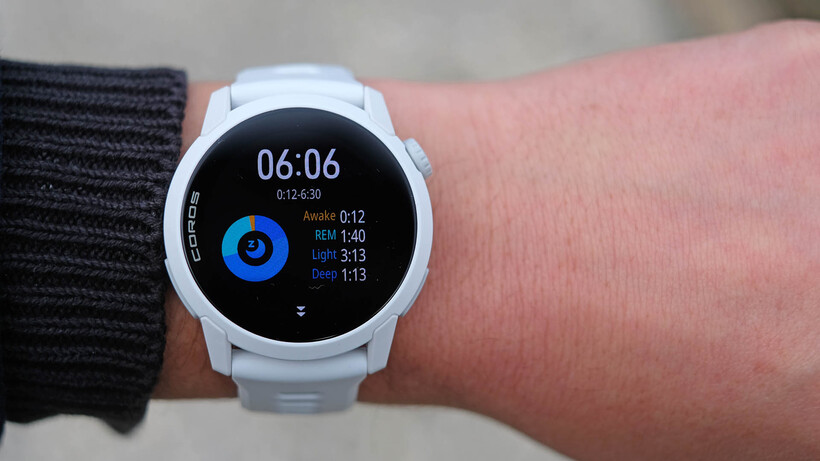
The Pace 4 covers the basics of health tracking. You get all-day heart rate tracking and a reliable log of your resting heart rate, while the HR array on the back can also analyse blood oxygen levels.
Coros also puts a reasonable emphasis on the flavour of the season, heart rate variability. All of this stuff is quietly gathered in the background, but you can also get a quick-fire view of a bunch of these stats, alongside stress, using the Wellness Check feature. This asks you to stay still for about 30 seconds during a reading period.
Is there much point in it? Not unless you find it a positive, perhaps meditative, experience in its own right.
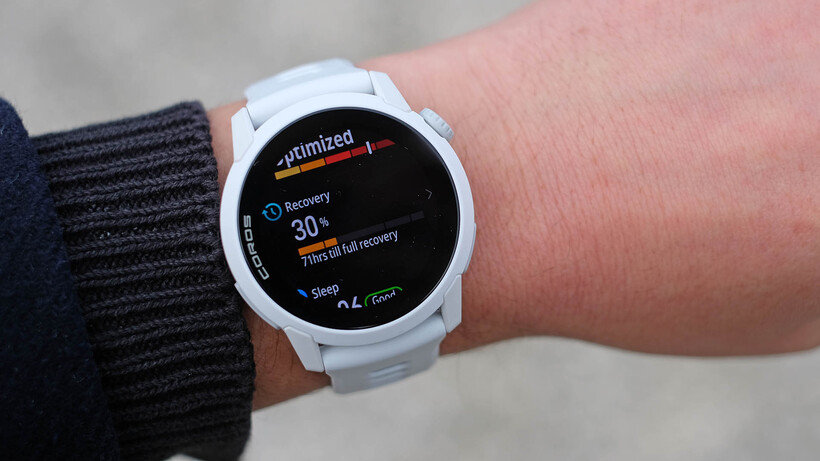
The Pace 4 lacks the additional sensors required for ECG readings, unlike the Coros Nomad. We wouldn’t expect to see them at this price, either.
My testing of the Pace 4 coincided with a bad week of sleep—handy for testing, if nothing else. And the situation is pretty familiar. The Pace 4 can usually work out fairly reliably when you go to sleep and when you wake up, but sometimes misses those annoying 3am wakeful moments.
Coros also doesn’t seem to be particularly critical of poor sleep, either. Over the same period, Garmin’s take on my sleep was essentially “bro, you are cooked,” while Coros gave me “good” scores and even a “great” rating one night. And this is despite both Coros and Garmin reporting fairly similar actual sleep durations.
Of course, sleep tracking works best over a longer period, when trends can be more reliably identified. And, to that end, the Pace 4 doesn’t further the brand’s ability to do much with the sleep data it does collect.
Battery life

The Pace 3 was known for its excellent battery life, and, despite shifting to a more power-hungry AMOLED screen, Coros has kept that up in the Pace 4.
It rates the watch’s battery life at 19 days, or six days using the always-on mode. I’ve mostly used the Pace 4 with “always-on” switched off.
After eight days of use, the charge level dropped from 100% to 29%, suggesting I’ll get around 11.5 days between charges. That’s lower than the claim, of course, but that period did include around 100km of tracked runs and a few gym sessions.
A roughly two-and-a-half-hour long run saw the battery level drop by 11%, equating to around 23 hours of use per charge. That’s very close to Coros’s own claim of 24 hours, when using dual-band GPS and the always-on screen mode — which is switched on by default during tracked activities.
With light use, the old Pace 3 can last even longer, but it does comfortably outlast the rival Forerunner 165. We got around a week’s use out of that popular watch.
Coros uses a little power puck attachment that plugs into the back of the watch; one fits into a USB-C socket. The idea is that this will be more convenient to carry around than a charge cable. But you do, of course, have to supply your own USB-C cable.
Final thoughts
The Coros Pace 4 is a great entry point for folks who want their first serious running watch—or for anyone looking for a reasonably affordable way to upgrade to an AMOLED one.
It has fairly advanced stats, doesn’t require too much upkeep, and could help you save on a pricey Runna subscription with its many included training plans.
The Coros watch software is a little less glossy than Garmin’s, and, in some non-running activities, the heart rate accuracy could be improved. But this watch is very easy to get along with and represents great value.

